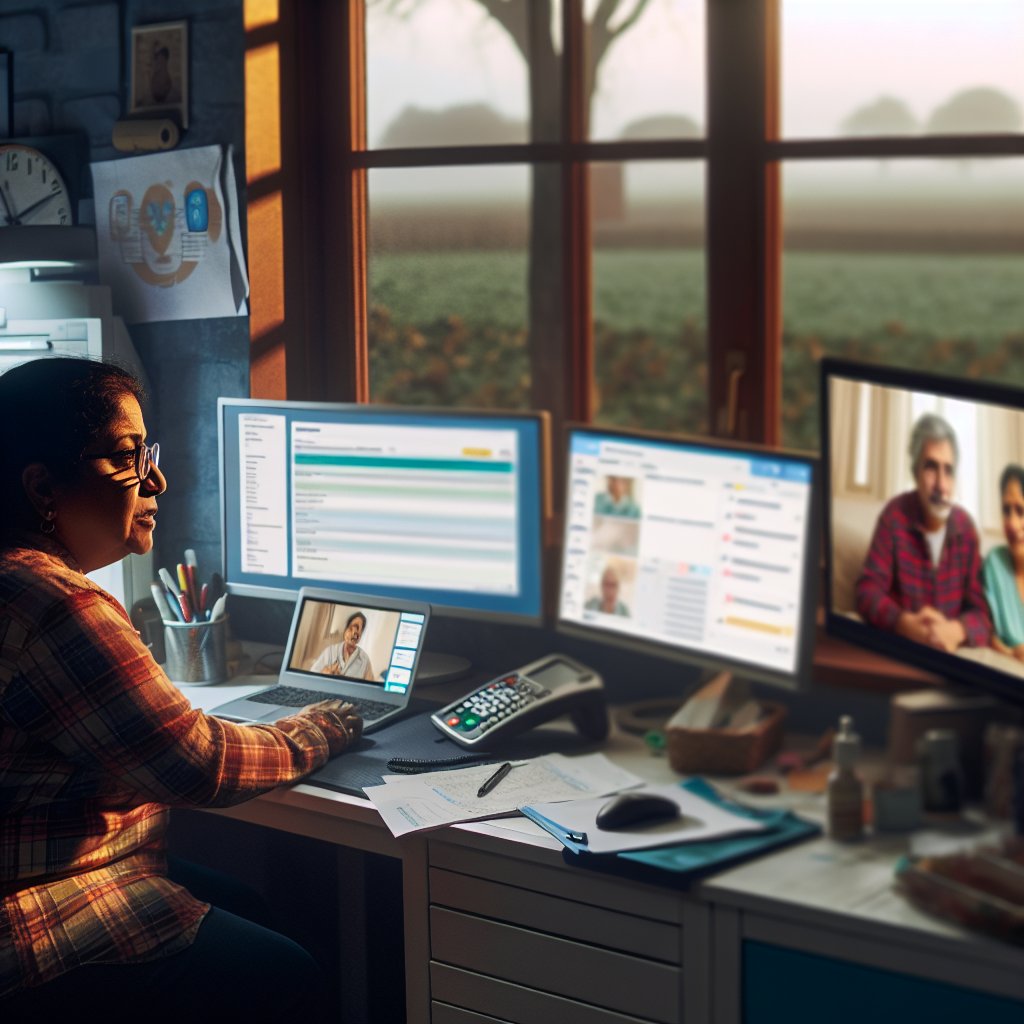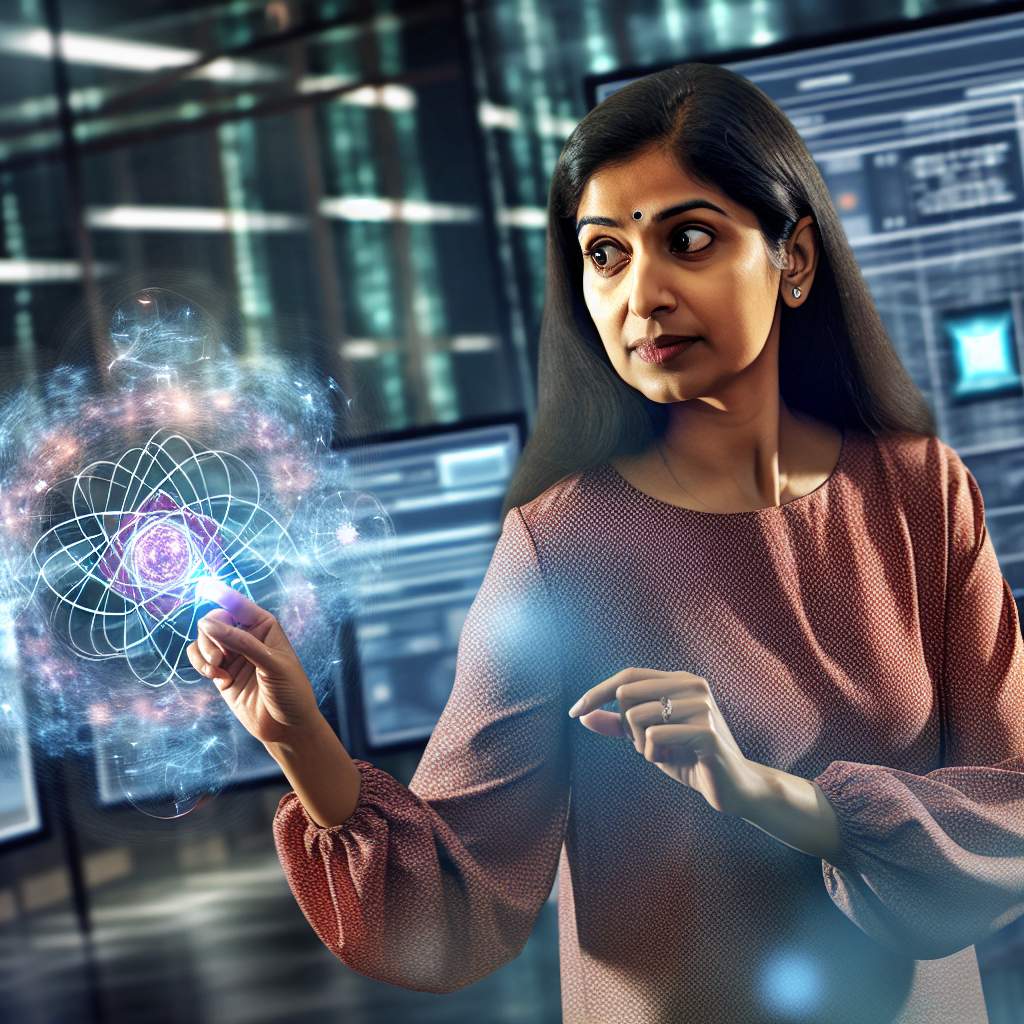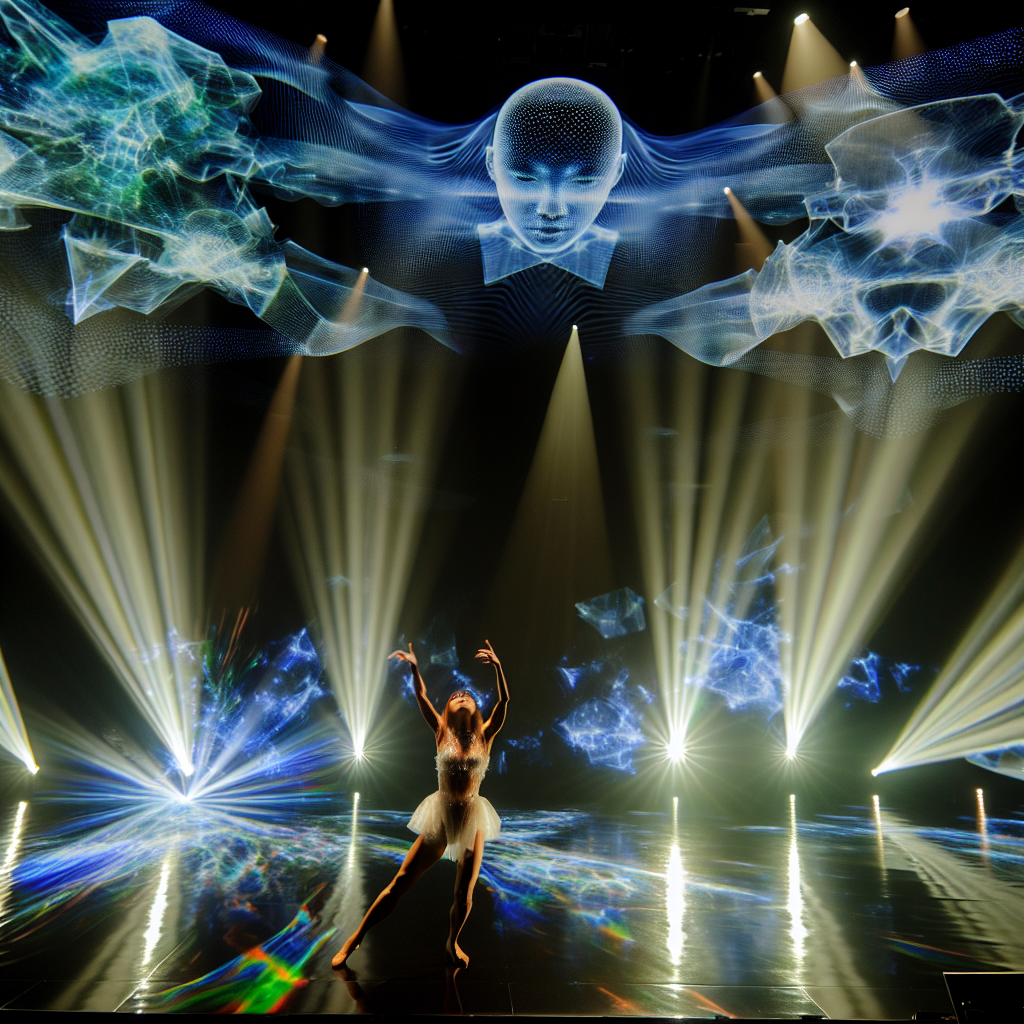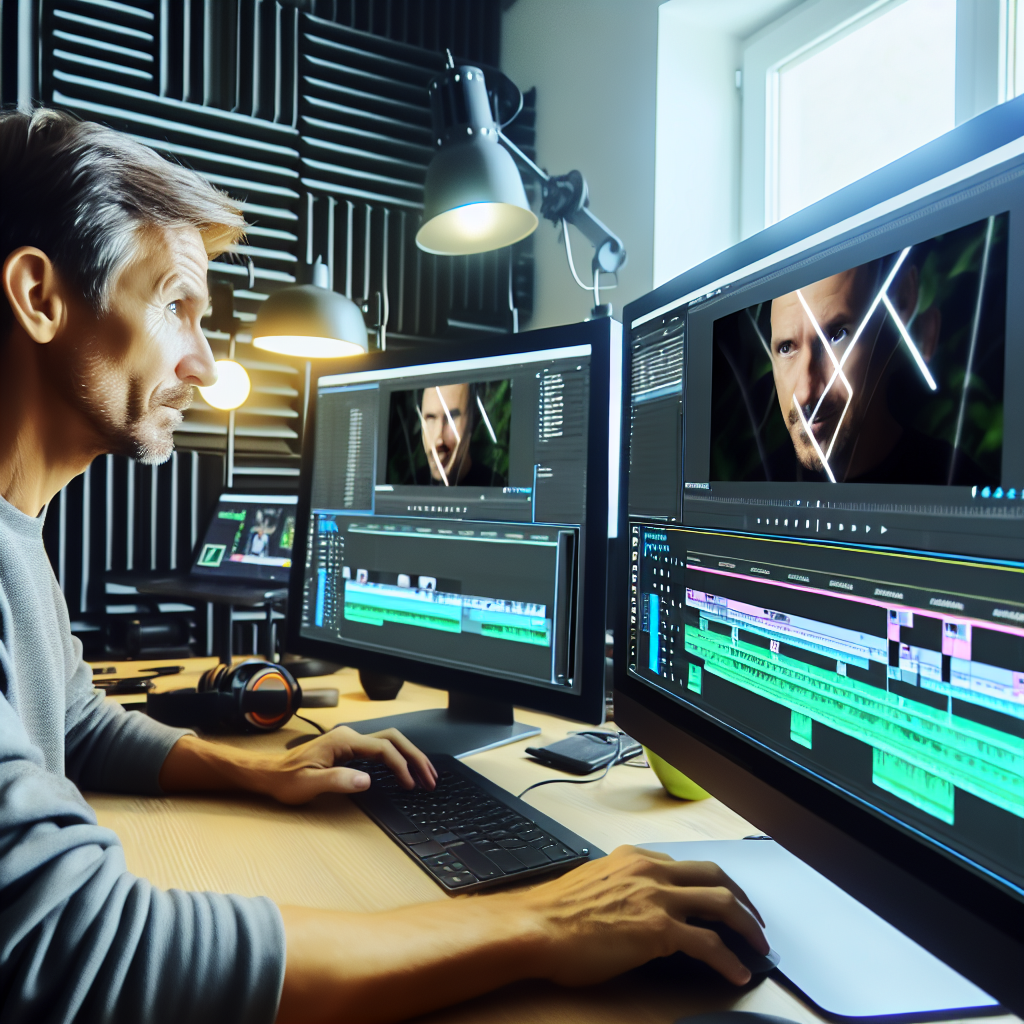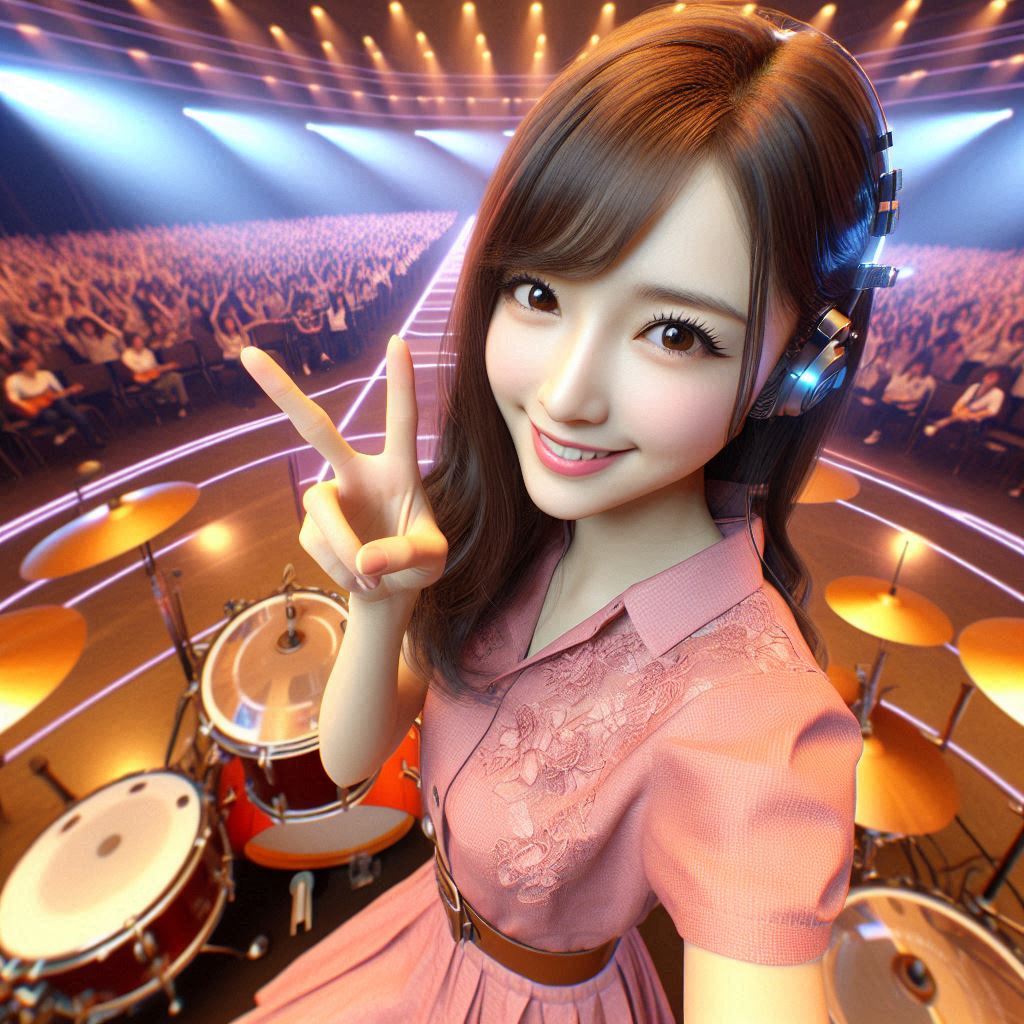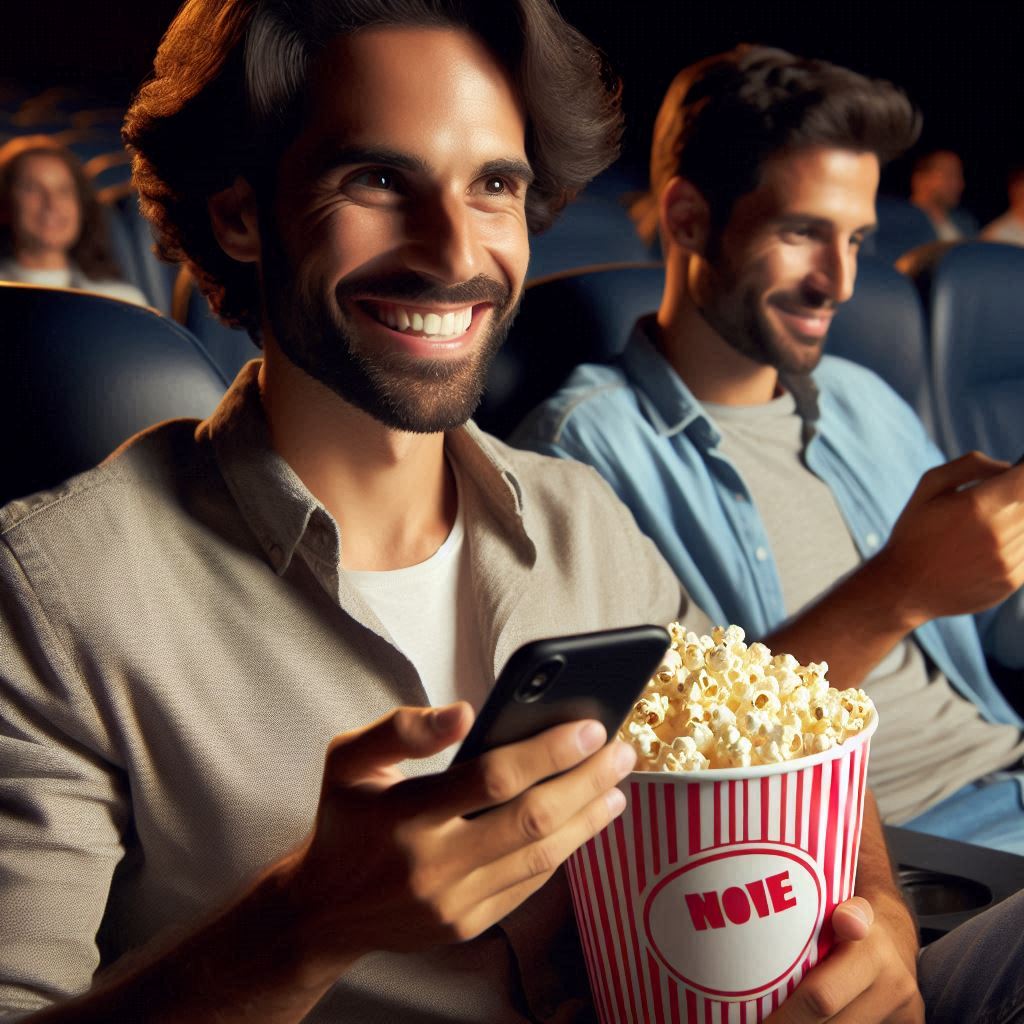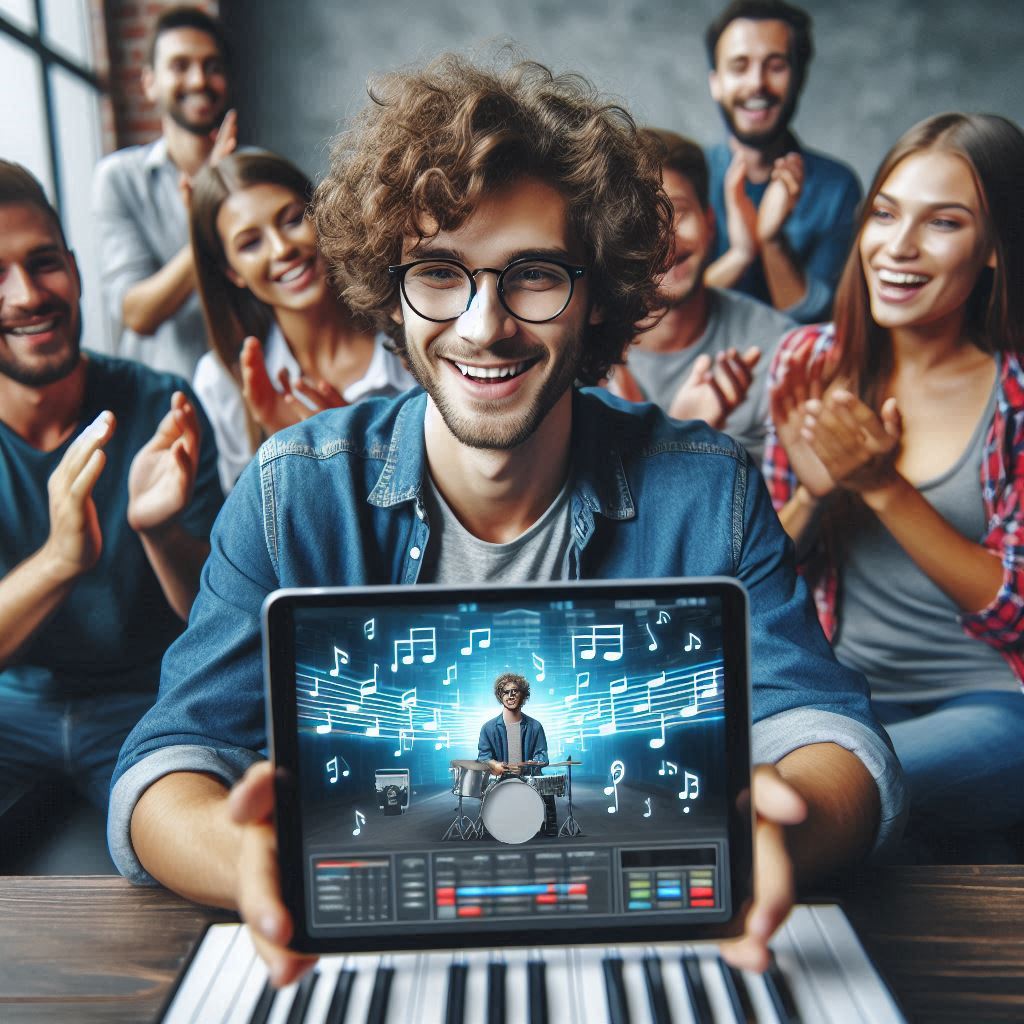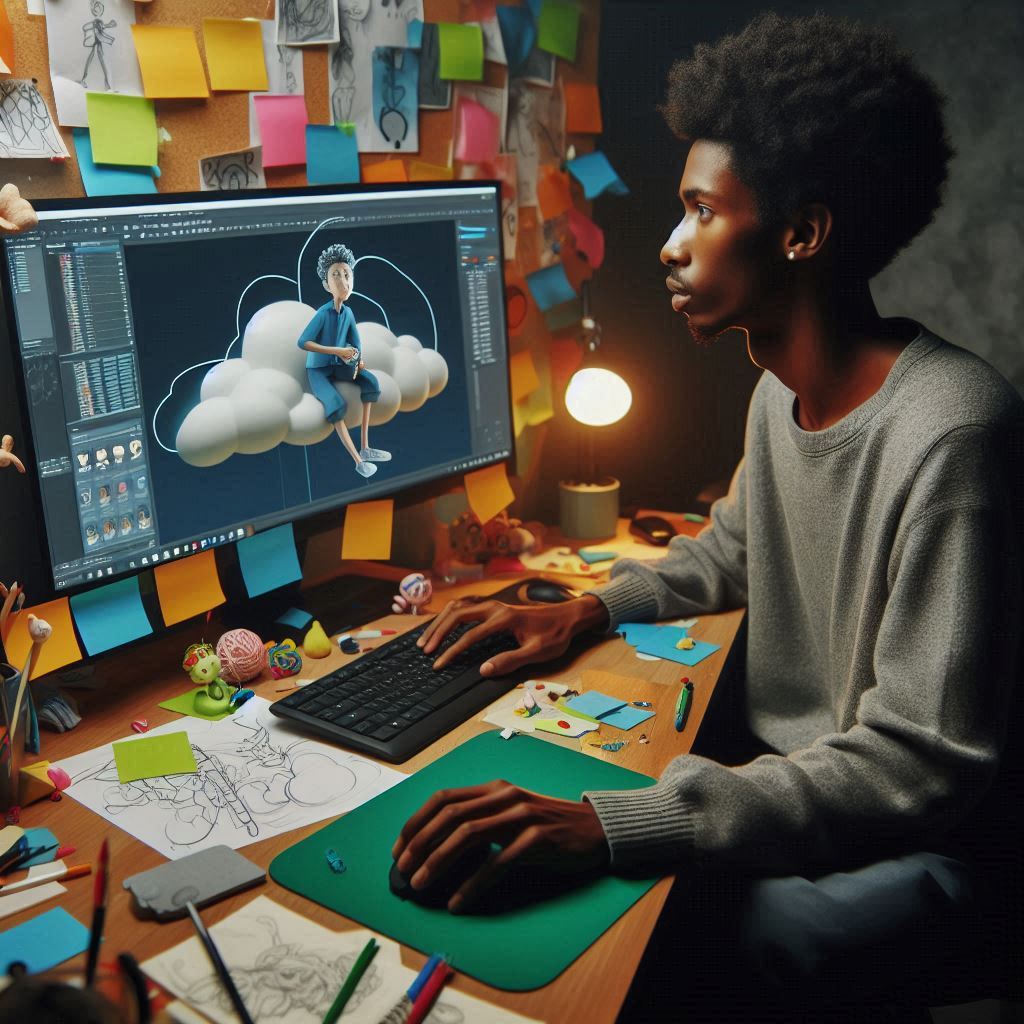Introduction
Definition of Augmented Reality (AR)
Augmented Reality (AR) enhances our physical world by overlaying digital elements.
This technology seamlessly combines real and virtual environments.
As a result, it creates immersive experiences for users.
In recent years, AR has gained prominence in entertainment and concert experiences.
Overview of its relevance in entertainment and concert scenes
Concerts are not just about music; they are about connecting with the audience.
AR adds new dimensions to this connection by transforming how fans engage with performances.
By incorporating visual effects, artists captivate audiences like never before.
This technology amplifies the emotional resonance of live performances.
Incorporating AR into concerts enables fans to experience music in innovative ways.
Fans can interact with holographic images and animated effects during live shows.
This interaction makes them feel like active participants in the performance.
Consequently, AR breaks the barriers between the stage and the audience.
Moreover, AR enhances storytelling during concerts.
Visual narratives complement songs, immersing the audience in the music’s themes.
This fusion of audio and visual elements deepens the audience’s emotional connection to the performance.
Every concert becomes a memorable event that resonates with fans long after it ends.
Additionally, AR fosters inclusivity in concert experiences.
Virtual experiences allow fans unable to attend in person to participate remotely.
They can watch performances through AR-enabled devices and feel part of the action.
This capability expands access and allows a broader audience to enjoy live music events.
The future of concert experiences lies in AR technology.
Artists and event organizers continuously explore innovative ways to integrate this tech into performances.
As AR continues evolving, it offers endless possibilities for enriching live music events.
Purpose of the blog post: to explore how AR is transforming concert experiences worldwide
This blog post aims to delve into the ways AR transforms concert experiences worldwide.
We will examine the technology’s impact on engagement, creativity, and inclusivity.
Join us as we explore the world of augmented concerts and their bright future.
The Evolution of Concert Experiences
Concerts have long served as a vital outlet for musical expression and communal enjoyment.
Over the decades, they have transformed dramatically.
This evolution is shaped by shifting cultural norms, technological advancements, and changing audience expectations.
To understand the current landscape of concert experiences, we must delve into their historical roots and trace the introduction of new technologies that have significantly enriched the live entertainment domain.
Historical Perspective: Traditional Concert Experiences
In the early years, concerts primarily took place in small venues such as taverns, churches, and community halls.
Musicians performed acoustic sets, relying solely on their skills and the ambiance of the venue.
Traditional concerts focused on the music itself, with limited visual enhancements or production elements.
Some key attributes of these early concerts included:
- Intimacy: Smaller audiences allowed for personal connections between artists and fans.
- Live Performance: Musicians showcased their abilities without reliance on technology.
- Cultural Significance: Concerts acted as communal celebrations, building a sense of togetherness.
As time progressed, larger venues emerged.
We Design & Develop Websites, Android & iOS Apps
Looking to transform your digital presence? We specialize in creating stunning websites and powerful mobile apps for Android and iOS. Let us bring your vision to life with innovative, tailored solutions!
Get Started TodayThe introduction of electrical amplification brought about a seismic shift.
This technology allowed artists to reach vast audiences, fundamentally altering concert dynamics.
Major concert halls and arenas became common, accommodating thousands of fans at a time.
This period also saw more elaborate stage setups, bringing theatrical elements into performances.
Introduction of New Technologies in Live Entertainment
Innovations have dramatically shaped concert experiences throughout history.
Each technological advancement has added new dimensions to live performances.
Some landmark developments include:
- Sound Reinforcement: The advent of PA systems improved audio clarity, ensuring everyone could hear the performance.
- Lighting Technology: Advanced lighting systems created immersive environments, enhancing the overall experience.
- Visual Projections: Video screens began appearing in concerts, providing audiences with close-ups of performers and intricate visuals.
- Streaming and Digital Media: Online streaming expanded audiences, allowing fans worldwide to participate in live events.
These technologies have created a multi-sensory experience, moving beyond merely listening to music.
Concerts have become visual spectacles, engaging audiences on multiple levels.
Today’s performances often combine music, art, and technology in seamless fashion.
How Audience Expectations Have Changed Over the Years
With each advancement in technology, audience expectations have evolved.
Today’s concertgoers seek experiences that extend beyond mere musical enjoyment.
They desire immersive environments that amplify their connection to the artists and the music.
Several trends outline these changing expectations:
- Interactivity: Modern audiences expect the opportunity to engage with performers and the experience itself.
- Personalization: Fans want tailored experiences, such as customized playlists or unique merchandise options.
- Sensory Engagement: Audiences are drawn to concerts that involve visual elements, including lasers, light shows, and video projections.
- Accessibility: Viewers anticipate digital access, with livestream options available for those unable to attend in person.
These shifts illustrate how audiences now expect entertainment that resonates deeply on emotional, sensory, and social levels.
Concerts have transformed into immersive experiences requiring artists to innovate continually.
The need for differentiation drives the incorporation of new technology, ensuring that every event feels unique.
As we move forward, it’s essential to recognize the impact these changes, particularly augmented reality (AR), have on concert experiences.
AR provides limitless opportunities for enhancing live performances.
In combination with existing technologies, AR can take concerts to unprecedented levels.
The future of live entertainment lies in the ability to merge physical and digital realms.
As we look ahead, we find an exciting horizon shaped by both technological innovation and evolving audience preferences.
This journey through the evolution of concert experiences demonstrates the industry’s resilience and adaptability.
Each era has defined its own standards, setting the stage for the next phase of live entertainment.
By understanding this evolution, we can appreciate and anticipate the forthcoming transformations that will further elevate concert experiences.
Read: Interactive TV: How Technology is Changing Viewing Habits
Understanding Augmented Reality
Augmented Reality (AR) enhances the real world by overlaying digital elements.
Unlike Virtual Reality (VR), AR keeps users anchored to their surroundings.
VR immerses users in a completely virtual environment, isolating them from reality.
AR vs. Virtual Reality
Understanding the differences between AR and VR is crucial:
- Inclusion of the Real World: AR integrates digital content with the real world, while VR creates an entirely separate environment.
- User Experience: AR adds layers of interaction to what users already see, whereas VR replaces the reality with immersive experiences.
- Hardware Requirements: AR typically requires smartphones or smart glasses, while VR often needs specialized headsets.
- Applications: AR is used in various fields, including retail, education, and entertainment. VR finds more use in gaming and simulations.
AR Technologies Used in Concerts
Concerts increasingly use AR technologies to enhance audience experiences.
Today, various innovations transform live music events into unforgettable experiences.
Below are some key AR technologies currently utilized:
- AR Glasses: Wearable technology allows attendees to see 3D holograms and animations overlaid onto the live performance. These glasses offer immersive views that can adjust according to individual preferences.
- Mobile Apps: Concert-goers can use mobile applications to unlock special features. These apps provide access to exclusive content, artist interactions, and additional visual effects during performances.
- Projection Mapping: Organizers utilize advanced projection techniques to transform stages. Artists appear alongside digital elements, creating stunning visual spectacles that captivate audiences.
- Interactive Experiences: AR allows fans to engage with the performance through smartphones. Users can access additional information about the band, songs, and even participate in live polls or games during the concert.
Key Statistics on AR Growth in Entertainment
Statistics demonstrate the rapid growth of Augmented Reality in entertainment, especially in concerts:
- Market Predictions: The AR market is expected to reach $198 billion by 2025, driven by increased adoption across various sectors.
- Audience Engagement: Surveys reveal that 61% of event-goers prefer events enhanced by AR technologies.
- Investment & Development: In 2021, investments in AR startups surged, reaching more than $3 billion. This trend indicates the growing confidence in AR’s potential in live events.
- Increased Popularity: 76% of participants stated they would attend more concerts featuring AR integrations.
Impact of AR on Concert Experiences
AR significantly alters the way people experience concerts.
We Design & Develop Websites, Android & iOS Apps
Looking to transform your digital presence? We specialize in creating stunning websites and powerful mobile apps for Android and iOS. Let us bring your vision to life with innovative, tailored solutions!
Get Started TodayTraditional concerts are evolving into multi-dimensional events.
Here’s how AR impacts performances:
- Enhanced Visuals: AR elevates the visual experience, allowing for dynamic stage environments. Audiences marvel as artists perform alongside immersive projections.
- Personalized Interactions: Attendees engage with artists and lyrics. They can access real-time updates, exclusive merchandise offers, and computer-generated visuals through their devices.
- Community Engagement: AR fosters a sense of community among concert-goers. Fans can share their experiences via social media or live-stream AR content.
- Accessibility: Utilizing AR technologies makes concerts more accessible. Those who cannot attend in person can enjoy augmented experiences remotely.
Challenges of Implementing AR in Concerts
While AR offers tremendous benefits in concert settings, challenges remain.
Organizers face hurdles when integrating AR experiences.
Here are some key challenges:
- Technical Limitations: Not all attendees possess devices compatible with AR features. This inconsistency limits the overall experience for some fans.
- Cost of Implementation: High-quality AR technology can be expensive. Budget constraints may hinder opportunities to integrate advanced AR experiences.
- Tethering Restrictions: Connectivity issues can disrupt AR experiences. An unstable network may lead to frustrating delays and interruptions for users.
- User Experience Design: Creating intuitive AR experiences requires expertise. Poorly designed applications may deter attendees from engaging with the technology.
Future of AR in Concerts
The future of AR in concerts is promising.
As technology evolves, so do the possibilities for concert experiences.
Several trends are emerging that will shape these experiences moving forward:
- Integration of AI: Artificial intelligence will enhance AR interactions. AI could personalize experiences further based on user preferences and behaviors.
- Partnerships with Artists: Collaborations between tech companies and musicians will grow. Artists embracing AR will create unique, interactive performances for fans.
- Worldwide Accessibility: As AR technology becomes more widely available, global concerts will become more accessible. Fans around the world could participate from their homes.
- Creation of Mixed Reality Events: The concept of mixed-reality concerts will emerge, blending AR, VR, and traditional performances. Fans will have the option to choose their preferred format.
Augmented Reality is revolutionizing concert experiences worldwide.
By enhancing visuals and audience engagement, AR transforms ordinary events into extraordinary experiences.
The combination of technology and live music creates an immersive form of entertainment.
As AR technology continues to advance, audiences can look forward to more compelling performances in the future.
Read: AI-Powered Tools Enhancing Music Production in 2024
Enhancing Fan Engagement Through AR
Augmented Reality (AR) revolutionizes how concertgoers engage with their favorite artists.
By integrating AR, live performances transform into multidimensional experiences.
Fans can now interact with their beloved musicians and immerse themselves in captivating visuals.
This technology offers unique features that make every concert unforgettable.
Let’s explore how AR enhances fan engagement through innovative and personalized experiences.
Interactive Features Available to Concertgoers
AR introduces a suite of interactive features for concert attendees.
These tools provide immersive experiences that heighten fan connection.
Here are some examples:
- Virtual Meet-and-Greets: Fans can interact with performers through virtual platforms. These sessions allow individuals to have one-on-one conversations, creating memorable connections.
- 3D Visual Effects: Artists can use AR to enhance their stage shows with holographic visuals. These effects elevate the artistic expression of live performances and keep audiences captivated.
- Interactive Merchandise: Fans can scan merchandise with their smartphones for exclusive content. This might include behind-the-scenes videos or special messages from the artists.
- Real-Time Polling: Performers can engage audiences by soliciting real-time feedback. Fans could vote on setlist changes, creating a more dynamic performance atmosphere.
- Location-Based Experiences: AR can tailor experiences according to the concert venue. Fans can explore venue-specific features that enhance their connection to the place and performance.
Personalization of Experiences Using AR
Personalization greatly enhances the impact of concert experiences.
AR technology allows each fan to tailor their journey based on individual interests.
Here’s how personalized AR experiences manifest:
- Customized Avatars: Attendees can create and use avatars to represent themselves in the digital space. These avatars can interact with the concert environment, enhancing the individuality of the experience.
- Personalized Notifications: Concertgoers receive alerts about exclusive content or surprise performances. This feature keeps fans in the loop, maximizing their overall enjoyment.
- Tailored Content: Through AR, fans can access content curated specifically for them. This might include playlists, interviews, or videos based on their musical preferences.
- Enhanced Photo and Video Filters: AR applications allow fans to apply unique filters during the concert. These filters can include elements that seamlessly integrate with the performance, creating memorable visuals.
- Interactive Games: Fans can engage with AR-driven games during the concert. These games provide fun distractions that keep the audience entertained while waiting for performances to start.
Case Studies of Concert Events That Successfully Utilized AR
Several artists have effectively employed AR to elevate their concerts.
These case studies showcase the immense potential of this technology.
Let’s examine a few standout examples:
Travis Scott’s Fortnite Concert
Travis Scott broke barriers during his virtual concert in Fortnite in 2020.
The AR elements transformed the gaming platform into a concert venue.
Fans experienced immersive visuals, with a virtual version of the artist performing among fantastical elements.
Post Malone’s 2019 Concert
Post Malone incorporated AR to create unforgettable moments during his 2019 concert.
The performance featured holographic versions of the artist participating in stunning visual effects.
Fans were amazed by how AR enhanced their experience of the music.
Muse’s Drones Tour
Muse took concert engagement to new heights during their Drones World Tour.
The band used AR and drone technology, allowing fans to interact with visual components throughout the show.
We Design & Develop Websites, Android & iOS Apps
Looking to transform your digital presence? We specialize in creating stunning websites and powerful mobile apps for Android and iOS. Let us bring your vision to life with innovative, tailored solutions!
Get Started TodayThis level of integration revolutionized how fans experienced live music.
Billie Eilish’s AR Integration
Billie Eilish embraced AR during her recent tours.
Her concerts featured visuals that interacted with the music and audience.
Fans were drawn deeper into the performance, enjoying elements crafted specifically for their enjoyment.
Coachella’s AR Experience
In 2022, Coachella introduced an AR feature through a dedicated app.
Attendees could scan areas of the festival grounds for interactive experiences.
This initiative made the festival not just a music event but a comprehensive sensory experience.
These case studies illustrate AR’s power to captivate fans.
Each performance transformed into a unique adventure, enhancing emotional connections to the artists and their music.
As technology advances, the future of concerts looks promising.
Augmented Reality is reshaping the live concert landscape.
It enhances fan engagement through interactive features and personalized experiences.
By examining case studies, we see how effectively AR captivates audiences.
Artists embracing this technology create unforgettable moments, leaving lasting impressions on their fans.
The future of concert experiences will likely see even more integration of AR technology.
Fans can look forward to even more interactions and personalized adventures in the realm of live music.
The journey has just begun, and AR promises to lead the way in transforming concerts worldwide.
Read: Streaming Platforms for 4K Ultra HD Movies: Best in 2024
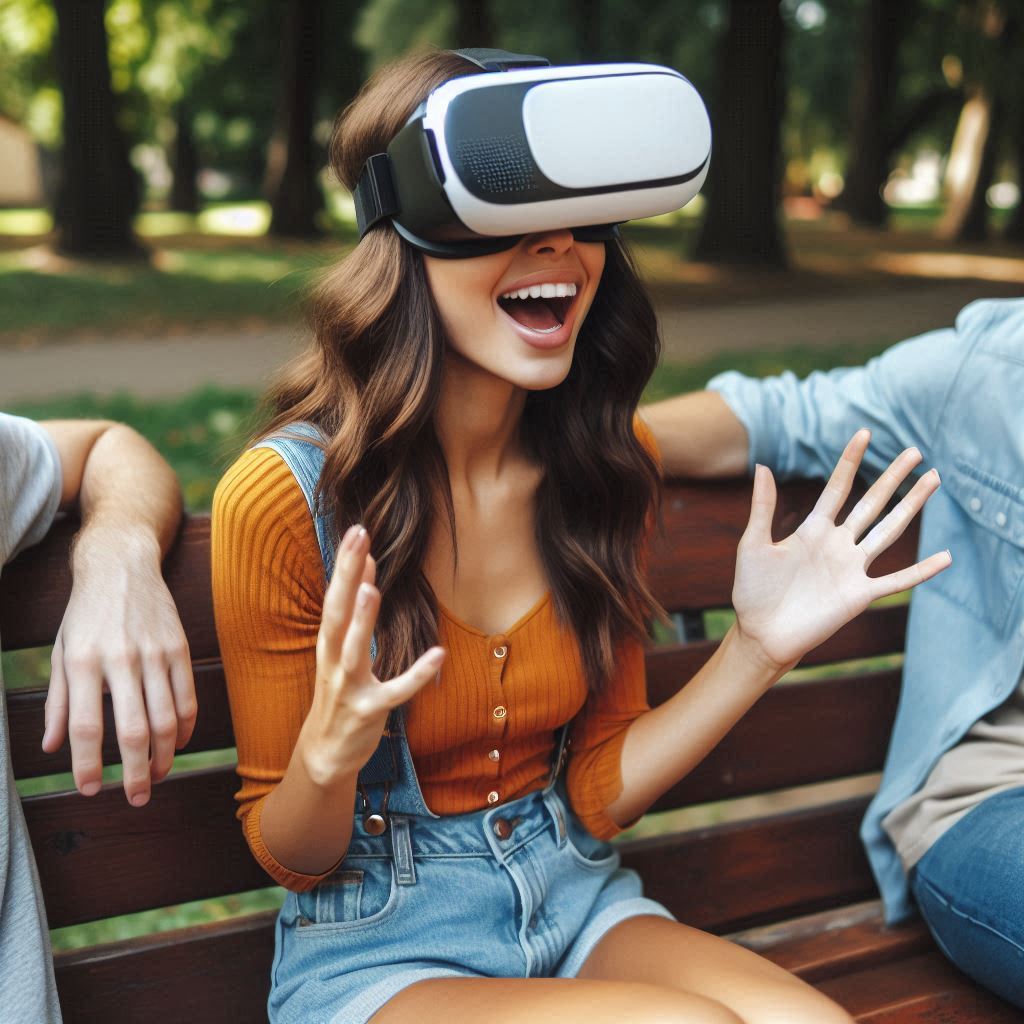
The Role of AR in Content Creation for Live Performances
Augmented Reality (AR) is redefining the way artists and event organizers create content for live performances.
By integrating AR into stage design, performers enhance audience engagement and create memorable experiences.
Artists now have the tools to immerse fans in a dynamic, multi-sensory environment.
Let’s explore how AR transforms live performances.
How Artists and Event Organizers Incorporate AR into Stage Design
AR technology allows artists to customize and enhance their stage environments significantly.
Here are some common approaches:
- Interactive Backdrops: Artists use AR to create interactive backgrounds that respond to the music and audience movements.
- 3D Visualizations: Performers can display 3D holographic elements, which appear to float above the stage.
- Augmented Costumes: Artists often wear costumes equipped with AR features that transform in real-time.
- Audience Participation: Some performers incorporate audience feedback and participation into the AR design, fostering deeper connections.
Integrating these elements not only captivates attendees but also encourages repeat attendance.
Fans become eager for each new performance, excited by the possibilities that AR technology holds.
The Impact of AR on the Storytelling Aspect of Live Performances
AR profoundly enhances storytelling in live performances.
The intertwining of technology and narrative captures the audience’s imagination.
Here are significant impacts:
- Enhanced Narratives: Artists create complex narratives using layered visuals and audio through AR.
- Emotional Engagement: AR contributes to the emotional resonance of performances, making audiences feel more connected.
- Non-Linear Storytelling: AR allows flexibility in storytelling, where different audience choices lead to varying experiences.
- World Building: Musicians can construct entire worlds through AR, immersing audiences in their artistic vision.
This innovative approach to storytelling keeps audiences engaged.
They are more likely to experience moments of surprise and delight that traditional performances simply cannot offer.
Examples of Innovative AR Content Created for Specific Concerts
Several artists have embraced AR to elevate their live performances.
Below are notable examples that showcase the potential of this technology:
- Travis Scott’s Astronomical: During this unique concert within Fortnite, Scott utilized AR to create a surreal experience that connected fans worldwide.
- Björk’s Digital App: Björk released an app accompanying her album that enhanced live performances with AR content tailored to each song.
- Lady Gaga’s ArtRave: In this concert, Gaga employed AR to create stunning visual illusions, amplifying her songs’ themes.
- Coldplay’s Music of the Spheres Tour: Coldplay introduced AR elements accessible through a dedicated app. Fans could unlock exclusive content during the show.
These groundbreaking performances illustrate how AR can redefine live music.
They offer new possibilities for artists to engage with fans and tell their stories.
We Design & Develop Websites, Android & iOS Apps
Looking to transform your digital presence? We specialize in creating stunning websites and powerful mobile apps for Android and iOS. Let us bring your vision to life with innovative, tailored solutions!
Get Started TodayWith each innovative use of AR, the concert experience becomes more immersive and engaging.
As we look ahead, incorporating AR into live performances will only continue to grow.
Artists, event organizers, and technology developers will collaborate to push the boundaries of creativity.
This partnership will pave the way for the next generation of live entertainment.
In fact, AR has opened up new avenues for content creation in live performances.
Artists and organizers are finding more ways to engage fans through immersive storytelling and novel experiences.
The impact of AR is undeniable, and its evolution will shape the future of concerts.
It creates imperative connections between the artist and the audience, ensuring a lasting impression long after the performance ends.
Read: Future of Immersive Gaming Experiences: Virtual Reality’s Role
Global Case Studies: Concerts Utilizing Augmented Reality
Augmented Reality (AR) has transformed the concert landscape in innovative ways.
Various artists and festivals around the world have embraced this technology.
By enhancing the live experience, AR creates unforgettable moments for attendees.
Let’s explore notable concerts and festivals using AR worldwide.
Notable Concerts and Festivals Utilizing AR
- Coachella Valley Music and Arts Festival: This iconic festival has consistently pushed boundaries. In 2019, Coachella partnered with AR to create an immersive experience. Attendees could use their smartphones to see 3D art installations across the festival site.
- Travis Scott’s Astronomical: The rapper’s virtual concert in Fortnite was groundbreaking. Utilizing stunning AR graphics, Scott took fans on an otherworldly journey. The concert attracted millions of viewers, showcasing the power of AR in virtual spaces.
- Post Malone’s AR Experience: During his 2020 concert, Post Malone incorporated AR elements. Fans witnessed vibrant visuals enhancing his performance. The integration of AR earned praise for its creativity and engagement.
- Rihanna’s ANTI World Tour: Rihanna introduced innovative AR elements throughout her tour. The stage transformed with dynamic visuals, creating an immersive backdrop. Attendees mentioned how the AR enhanced their connection to the music.
- Imagine Dragons: A Night of AR: The band held a unique concert with AR integrations. As they performed, the stage lit up with 3D graphics. Fans expressed excitement about the synergistic experience.
Different Approaches Taken by Various Artists
Different artists have implemented AR with unique strategies.
Each approach highlights their creativity and vision.
- Interactive Fan Engagement: Many artists have chosen interactive experiences. Attendees can use smartphones to unlock content. This builds a connection between fans and performers.
- Enhanced Visuals: Several artists focus on stunning visual displays. They incorporate holograms and animations during shows. These graphics capture the audience’s attention.
- Storytelling Through AR: Some artists use AR to tell stories during performances. They blend music with narrative elements, making the experience more profound.
- Gamification: Certain events have introduced gamified elements. Fans can participate in treasure hunts or challenges using AR. This approach creates a fun, interactive atmosphere.
- Collaboration with Tech Companies: Collaborations with tech companies drive innovation. Many artists seek partnerships to develop specialized AR experiences. These collaborations often enhance the quality of the experience.
Audience Reception and Feedback
Audience reactions to AR experiences have been overwhelmingly positive.
Many attendees report that AR has elevated their concert experiences.
- Enhanced Immersion: Fans appreciate the deeper engagement AR provides. The technology allows them to feel more connected to the performance. As a result, many report feeling like they are part of the show.
- Visual Appeal: Attendees consistently rave about the stunning visuals AR creates. The combination of live music and advanced graphics amazes concert-goers.
- Memorable Moments: Fans emphasize that AR enhances unforgettable moments. Many express excitement about sharing their experiences on social media.
- Curiosity and Enthusiasm: The integration of AR has sparked curiosity among audiences. Fans often look forward to upcoming shows that feature AR elements. This anticipation fuels excitement within the music community.
- Constructive Feedback: While feedback is largely positive, some constructive criticism arises. Some attendees suggest more seamless integration of AR elements. They desire an experience that feels less intrusive and more natural.
Future of AR in Concerts
Looking ahead, the potential for AR in concerts remains vast.
Artists and festival organizers can continue to explore innovative approaches.
As technology evolves, so will the possibilities for engagement.
- Advancements in Technology: Continued advancements in AR technology will create even richer experiences. Future concerts may feature more lifelike holograms and immersive environments.
- Integration with Virtual Reality: The blending of AR and virtual reality (VR) holds promise. Artists could offer fully immersive environments for fans who cannot attend live events.
- Personalized Experiences: Future developments may lead to more personalized AR experiences. Fans could customize their journeys, enhancing their connection to the show.
- Sustainable Practices: Incorporating AR could lead to more sustainable concert practices. By reducing the need for physical production elements, artists can lower their environmental impact.
- Accessibility: AR could enhance concert accessibility for all attendees. Innovations might allow individuals with disabilities to enjoy a more tailored experience.
The integration of Augmented Reality into concerts has revolutionized audience experiences worldwide.
Through unique approaches and collaborations, artists have successfully enhanced their performances.
As technology continues to evolve, AR’s role in live music will only expand, offering fans more engaging and memorable experiences ahead.
Challenges and Limitations of Implementing AR in Concerts
As concert organizers explore the potential of augmented reality (AR), they encounter numerous challenges and limitations that can affect the overall experience.
Understanding these hurdles is essential for a successful integration of AR into live events.
This section highlights the various technical and audience-related challenges, as well as the potential negative impacts on audience experience.
Technical Challenges
Implementing AR at concerts involves several technical difficulties that can hinder performance.
Here are the main technical challenges:
- Internet Connectivity: A reliable and fast internet connection is critical for AR applications. Poor connectivity can lead to lag and glitches, frustrating users.
- Hardware Limitations: Many audience members may not possess the necessary hardware to fully experience AR. Limited device compatibility can complicate the user experience.
- Software Integration: The integration of AR software with existing concert technology can be challenging. Technical glitches can hinder the user experience.
- Battery Life: AR applications can drain device batteries quickly. Low battery levels may force users to exit the experience prematurely.
- Data Usage: High data consumption can deter attendees from using AR features, especially those with limited data plans.
- Scalability: As more users engage with AR simultaneously, the technology must scale effectively to maintain performance.
Audience Accessibility
Successful AR implementation requires consideration of diverse audience demographics.
Factors influencing accessibility include:
- Age Differences: Younger audiences may be more comfortable using AR technologies. Older attendees might struggle with unfamiliar interfaces.
- Technical Literacy: Varying levels of tech-savviness can impact the audience’s ability to engage with AR. Some may find the technology overwhelming.
- Device Availability: Not every attendee owns AR-capable devices. Relying on personal devices for access can lead to exclusion.
- Cost Barriers: High costs associated with advanced devices and data plans can limit participation for some concertgoers.
- Geographic Differences: Attendees from regions with limited technological infrastructure may face challenges accessing AR features.
Potential Distractions
While AR can enhance concert experiences, it may also introduce distractions.
These distractions can negatively affect engagement and enjoyment during the performance:
- Overstimulation: Too much visual information can lead to sensory overload. This often results in audience members not fully enjoying the live show.
- Device Distractions: Audience members focused on their screens may miss important moments of the performance. This harms the communal experience.
- Social Pressure: The expectation to engage with AR features might create anxiety. Some attendees may prefer simply enjoying the concert without additional tech.
- Content Quality: Poorly designed AR content may confuse users. If the AR experience feels rushed or disorganized, it can detract from the show’s atmosphere.
- Fragmented Attention: The need to balance watching the performance and using AR can lead to divided attention. This often diminishes the overall concert experience.
While augmented reality presents exciting possibilities for enhancing concert experiences, it does come with a set of challenges and limitations.
Concert organizers must address these technical difficulties and audience accessibility issues to create a seamless and enjoyable experience for all.
Furthermore, concert planners need to consider how to minimize distractions that may detract from the live music experience.
We Design & Develop Websites, Android & iOS Apps
Looking to transform your digital presence? We specialize in creating stunning websites and powerful mobile apps for Android and iOS. Let us bring your vision to life with innovative, tailored solutions!
Get Started TodayBy acknowledging these challenges, they can better strategize and implement effective AR solutions that enhance, rather than overshadow, the live performance.
As the concert landscape continues to evolve, learning from early AR implementations will guide future endeavors.
Embracing technology while remaining aware of its limitations will pave the way for better, more inclusive concerts.
Ultimately, augmented reality should elevate the concert experience, creating memories that resonate long after the last note fades.
The Future of AR in Concerts
As technology advances, augmented reality (AR) continues to shape the future of live entertainment.
Concerts, in particular, have the potential to evolve dramatically.
The integration of AR offers unique experiences that captivate audiences in unprecedented ways.
Predictions for AR Technology Development in Live Entertainment
AR technology will undergo significant development in the coming years.
Here are some predictions about how it may evolve:
- Enhanced Interactivity: Expect more interactive elements that allow audience participation. Fans will engage with the music and performers in real-time.
- Seamless Integration: The blending of physical and digital experiences will become more seamless. Concertgoers may not distinguish between the two worlds.
- Real-Time Data Utilization: Performers can use data analytics to tailor experiences based on audience reactions. This will lead to more personalized concert experiences.
- Compact AR Devices: The development of lightweight AR glasses will enable fans to experience concerts hands-free. This technology will enhance mobility and enjoyment.
- Location-Based Experiences: AR will allow for location-based experiences tied to specific venues. Fans will enjoy unique content based on where they attend concerts.
- Immersive Storytelling: Artists will create narratives through AR that enhance the music. These narratives will engage and immerse audiences deeply.
- Cost-Effective Solutions: AR technology will become more affordable for both artists and venues. This will encourage widespread adoption in the industry.
The Potential Role of AR in Hybrid Concerts
Hybrid concerts, which include both in-person and virtual audiences, are gaining popularity.
AR technology plays a crucial role in this trend. Here’s how:
- Simultaneous Engagement: AR can engage both physical and virtual audiences simultaneously. Everyone can share the experience no matter where they are.
- Unique Content Delivery: Artists can offer unique content for each audience type. Virtual attendees may receive exclusive performances visible only through AR.
- Interactive Features for All: Interactive features, like live polls or requests, can bridge the gap. Both audiences can participate and influence the show in real-time.
- Enhanced Visuals: AR can enhance visuals for virtual attendees. They might see additional effects not visible to those in the physical venue.
- Global Reach: Artists can reach a broader audience through hybrid events. Fans from around the world can join with virtually no travel costs.
- Environmental Sustainability: Hybrid concerts promote sustainability. Reducing the need for travel lessens the overall carbon footprint.
- New Revenue Streams: With AR, artists can create new merchandise or digital experiences. These add-ons can boost overall revenue from hybrid concerts.
Long-Term Implications for the Music Industry and Artist Revenues
The long-term implications of AR in concerts will revolutionize the music industry.
Here’s a look at how it might impact artists and their revenues:
- New Creative Opportunities: AR opens doors for more creative expressions. Artists can experiment with visuals and experiences beyond traditional performances.
- Increased Fan Interaction: Enhanced fan interaction leads to stronger connections. Fans are more likely to support artists financially through merchandise and streaming.
- Innovative Monetization: Artists can monetize AR experiences in various ways. Examples include virtual meet-and-greets, exclusive content, and premium access features.
- Expanded Tour Capabilities: Artists can expand their tours with hybrid concerts. They can reach fans in new markets without extensive travel.
- Data-Driven Decisions: The use of data analytics will inform artists’ decisions. They can tailor their performances to suit audience preferences and trends.
- Collaboration with Brands: Artists may partner with brands for AR experiences. This creates additional revenue opportunities and brand engagement.
- Changing Revenue Distribution: As AR develops, revenue distribution may change. Live experiences may become a larger percentage of overall income compared to traditional sales.
In essence, the future of augmented reality in concerts promises to create transformative experiences.
As AR technology evolves, it will enhance interactions and create new opportunities for artists.
The music industry stands on the brink of a new era where live performances extend beyond physical boundaries.
Fans can expect an enriched blend of the real and digital, fostering connections previously unimaginable.
Moving forward, artists and venues that embrace AR technology will find themselves at the forefront of the industry’s evolution.
By innovating and adapting, they can unlock potential that benefits both the music community and audiences worldwide.
Concerts will no longer be just events; they will become immersive, participatory experiences that resonate long after the final note fades.
Conclusion
Recap of the transformative power of AR in enhancing concert experiences
Augmented Reality (AR) has proven transformative for the live concert scene.
his technology enhances user engagement and immerses fans in new ways.
It bridges the gap between artists and their audience. Interactive elements elevate performances to unforgettable experiences.
Visual effects complement every beat, making concerts feel like unique art exhibitions.
Final thoughts on the potential future of AR in live entertainment
As more artists adopt AR, the potential for innovative experiences grows.
Fans can expect holographic displays and real-time graphics.
These innovations create a multi-layered experience.
They cater not only to basic enjoyment but also to emotional connection.
This transformation reshapes how we perceive live music shows.
The possibilities are endless, limited only by our imagination.
The future of AR in live entertainment shines brightly.
Imminent advancements promise even more impressive integrations.
From personalized experiences to global reach, the landscape evolves rapidly.
Artists and venues will adapt to use AR’s full potential.
Audiences may soon interact with their favorite performers like never before.
We Design & Develop Websites, Android & iOS Apps
Looking to transform your digital presence? We specialize in creating stunning websites and powerful mobile apps for Android and iOS. Let us bring your vision to life with innovative, tailored solutions!
Get Started TodayCall to action for fans to embrace new technologies in their concert experiences
We encourage fans to embrace these new technologies wholeheartedly.
By engaging with AR experiences, concert-goers can enhance their enjoyment.
Experiencing live events through this new lens opens doors for creativity.
Join other enthusiasts who dive into this augmented world.
Celebrate music in a way that combines technology and artistry.
The future awaits, and it looks spectacular.
Before You Go…
Hey, thank you for reading this blog post to the end. I hope it was helpful. Let me tell you a little bit about Nicholas Idoko Technologies.
We help businesses and companies build an online presence by developing web, mobile, desktop, and blockchain applications.
We also help aspiring software developers and programmers learn the skills they need to have a successful career.
Take your first step to becoming a programming expert by joining our Learn To Code academy today!
Be sure to contact us if you need more information or have any questions! We are readily available.
Put Your Tech Company on the Map!
Get featured on Nicholas Idoko’s Blog for just $200. Showcase your business, boost credibility, and reach a growing audience eager for tech solutions.
Publish Now

